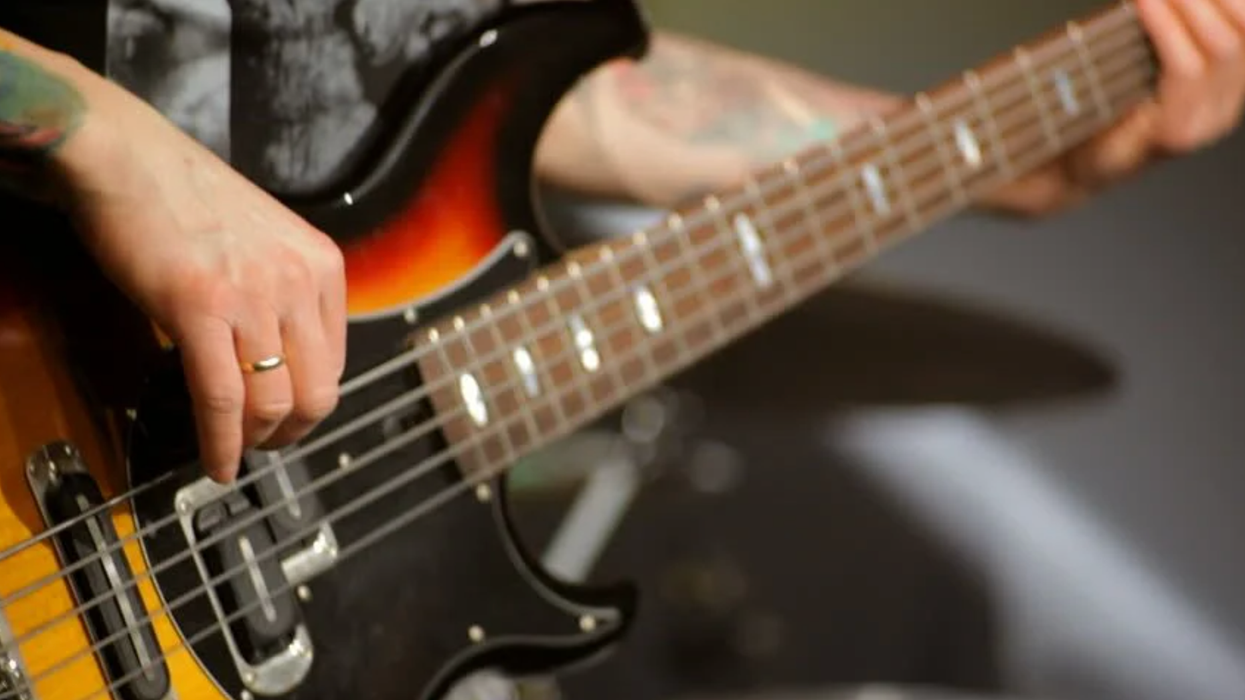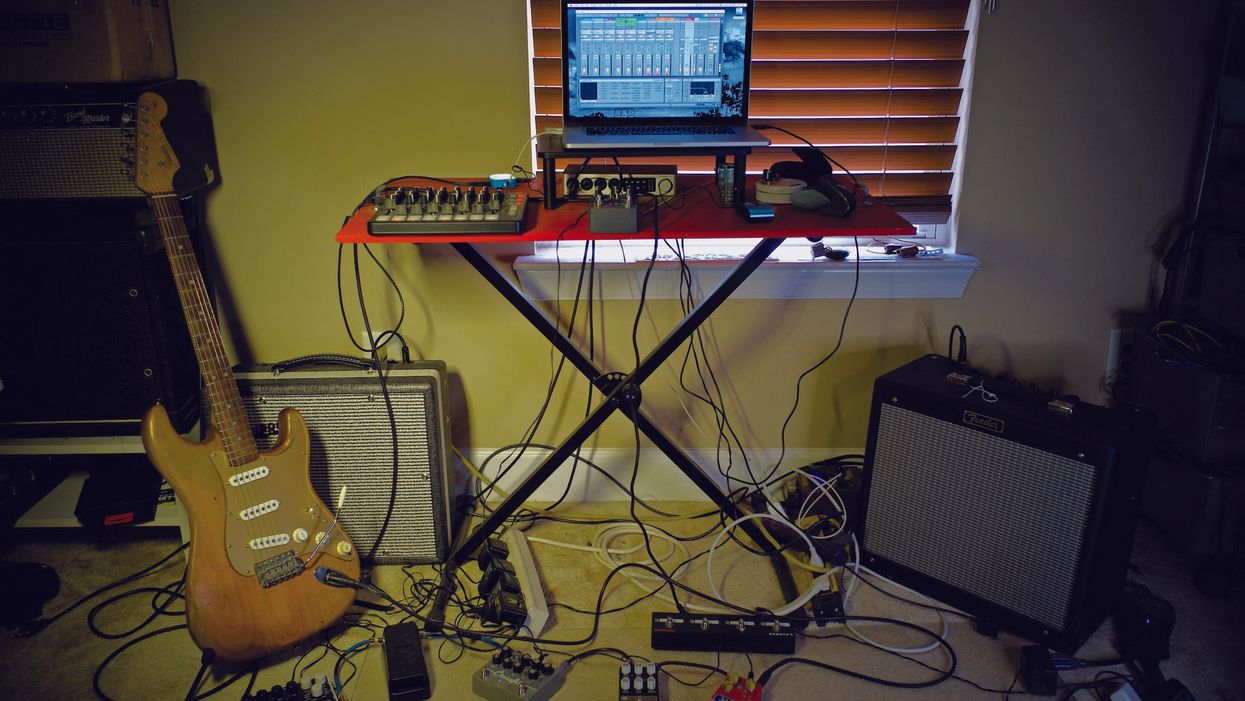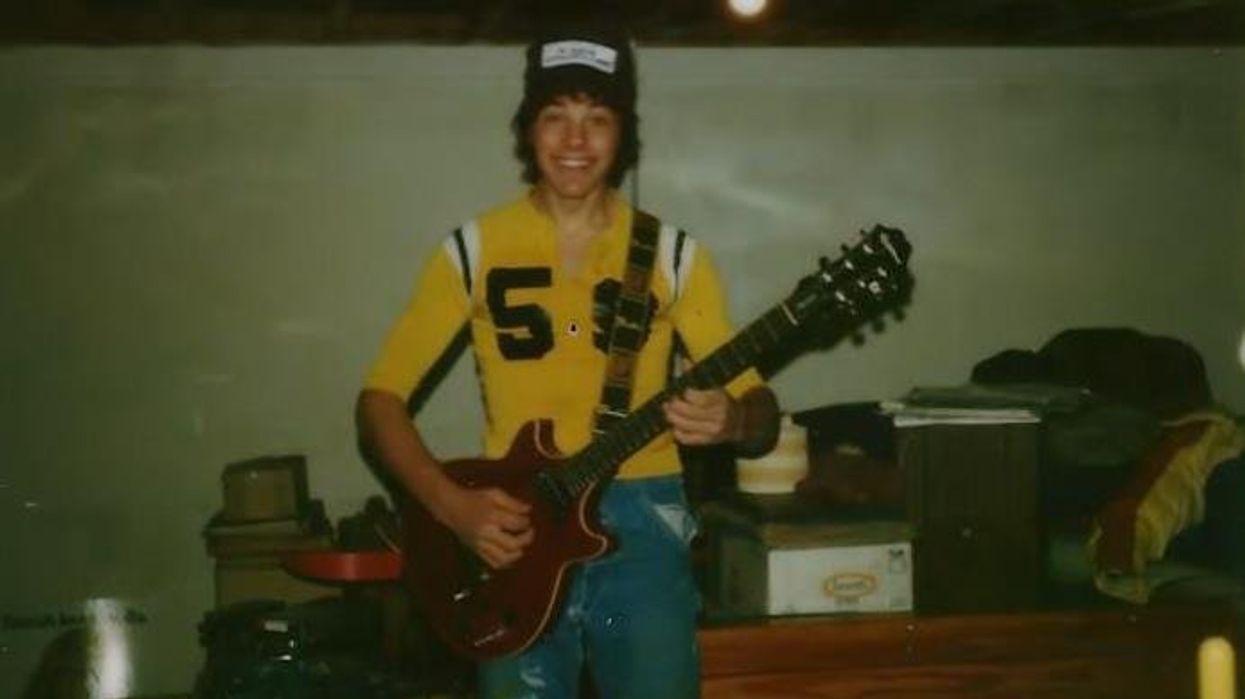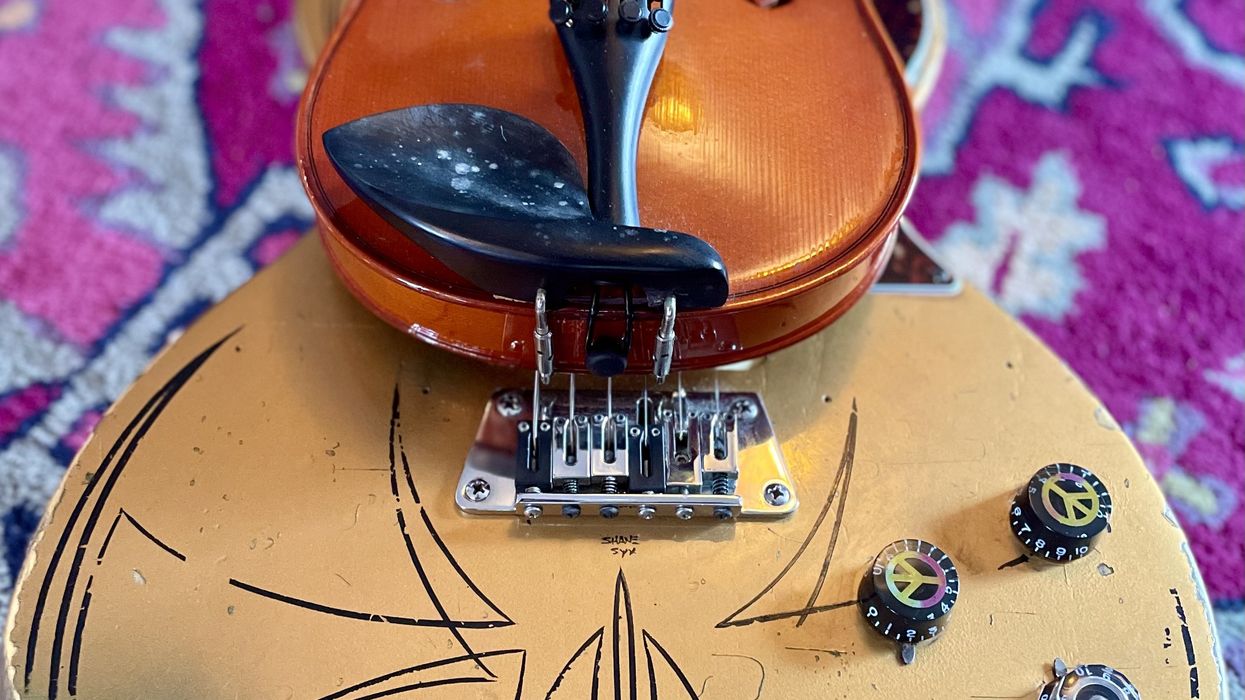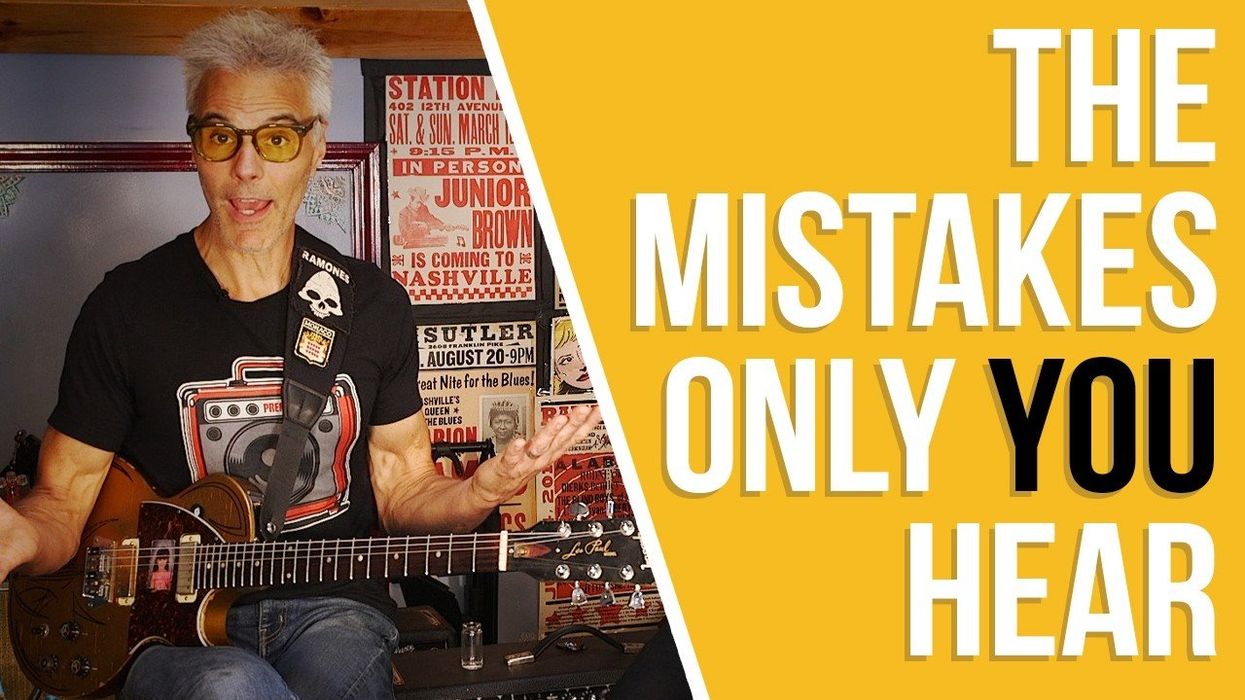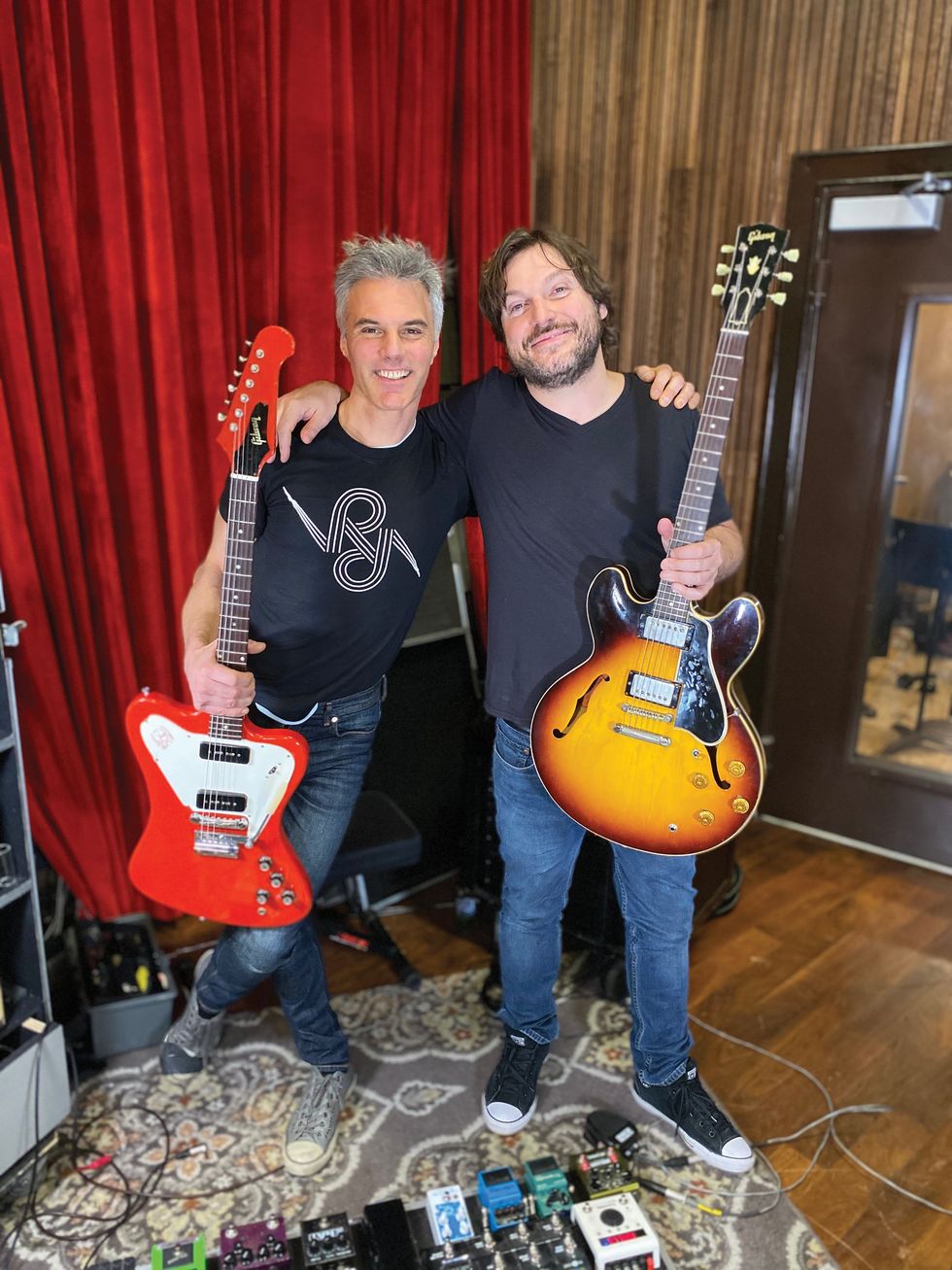That got me to thinking:
What is it about a guitar-playing bass player that's different from a "pure" bass player. Surely, our musical DNA is ninety-nine percent identical. So what exactly is that other one percent? And how can a guitar player play bass like a "real" bass player? I don't presume to know the answers, so I asked some accomplished "real" bass players from a variety of genres to weigh in.
Maybe it has to do with the way we relate to our respective instruments. David Ellefson, former Megadeth bassist and now Artist Relations Manager for Peavey thinks so: "Thinking of the bass as just a longer, deeper version of the guitar is the wrong approach for technique as well as composition." Six-string fretless virtuoso Steve Bailey expands on this notion, saying, "Guitarists think of music from the top down. Most of the licks happen in the mid-to-upper register, rarely going down. Bass players generally think below the fifth fret, occasionally working their way up. Traditionally, guitar is taught with high E as the first string. On bass, we teach that the first string is the low E [or low B]." Phil Chen, bassist for Jeff Beck, Rod Stewart and countless others says, "Bass is a foundation instrument, like the foundation of a house." Chen advises players to "replicate the low frequency of the bass drum." Ellefson sums it up this way, "It's called a bass, not a treble, so please play it like one."
Maybe it's the mindset.
Doug Pinnick from King's X sees it this way: "If the bass player can't find the groove, it's because he's thinking 'guitar.' Guitarist-bass players tend to overplay and have no concept of the true reason we play bass. The bass dictates the groove and the feel." Former Suicidal Tendencies and Infectious Grooves bassist, Josh Paul, now with Daughtry, notices, "A lot of guitarists play a bit in front of the beat, in contrast to pure bass players who play a bit behind the beat. I like to think of the bass guitar as a drum kit that you can play melody on." Peavey's Ellefson continues, "A bass line that just follows a guitar pattern an octave lower is really a waste of a perfectly good track."
Maybe it's technique.
Says Ellefson, "It's a guitarist's right of passage to do anything they can to be nimble and quick on the fretboard. But a truly skilled bassist is solid, forceful and commanding, not necessarily swiftly dancing across the fingerboard."
Expanding on this is Walter Milsap, bassist and musical director for Lady Gaga, who has also worked with Beyonce, Alicia Keys, Timbaland, and Mariah Carey. Milsap notices that guitar-playing bass players are easy to spot because, "They're usually quicker with their fingering then most bass players." 311's P-Nut admonishes, "A guitar player playing bass shouldn't try to play slap; it's a dead giveaway." Amen, brutha.
While most of the players I interviewed jumped at the chance to finally tell their guitar playing brethren what they really think, a few didn't see the big deal. Jonas Hellborg, who has played with John McLaughlin, Shawn Lane, Buckethead and many others, told me, "I actually like when there's an extra element to people's playing. So for me, wrong is right." Similarly, legendary producer Don Was said, "I don't think that playing bass like a guitar player is, by definition, a bad thing: Bill Wyman and John Entwhistle come to mind as great influential players who did it the 'wrong' way."
Okay, but what if you don't want to strap on a bass and sound guitar-challenged? Don Was suggests, "Lose the pick and don't let the notes ring indefinitely. Take your fingers off the fretboard and let the notes breathe. You're part of the rhythm section now. Space is very important to the groove. Lock in with the bass drum and the hi-hat, and play in the pocket." Phil Chen agrees: "Play with the bass drum." In that vein, Steve Bailey advises, "Take three steps back and stand with the drummer and explore how few notes can actually make it happen." Similarly, Josh Paul offers, "It's important that the bass and drums work together as one unit." Walter Milsap gives this simple but sage advice to guitarists: "Change your delivery from complicated to simple." Don Was echoes this when he says, "Less is more."
Several of the bassists I talked with suggested that guitarists listen to legendary '60s Motown bassist James Jamerson, who Don Was describes as "such a lyrical, melodic musician that he was like a bassist and a guitarist put together." Others suggested listening to Larry Graham, Jaco Pastorius and Chris Squire.
Finally, Don Was offers this gem to make sure us guitarists can easily pass as "real" bass players: "Always dress as sharp as possible."
[Updated 11/8/21]


